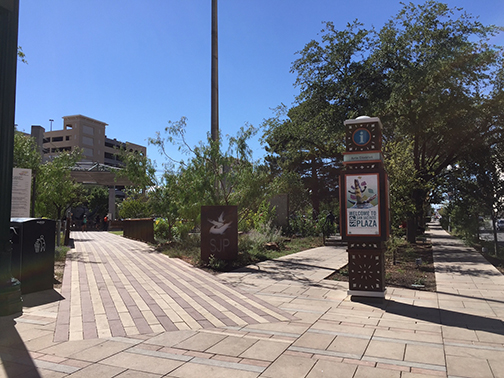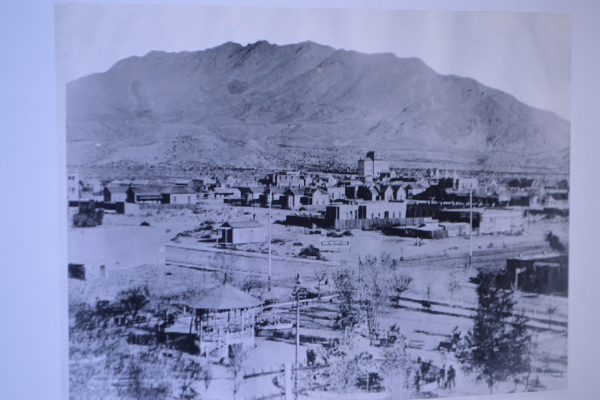Newly renovated San Jacinto Plaza has been a gathering place for more than 100 years as El Pasoans have congregated there for holiday festivities, to listen to live bands and recently for memorials.
“It really is the epitome of what a public square is,” said Robert Diaz, El Paso County Historical Society spokesman and historian. The Plaza was conceived in 1881 and built in 1883.

Photo by Karina Nanez, Journalism in July
In 2015, San Jacinto Plaza was designated a Lone Star Legacy Park, the highest honor that can be given to a Texas park because this recognizes that it has special historical prominence and has endured the test of time.
As recorded by the Texas State Historical Association the first time in history that the American and Mexican presidents met was in San Jacinto Plaza, President Taft wanted to meet with President Diaz in order to continue American investments in Mexico, President Diaz accepted the invitation to regain lost popularity and remind the people he still had firm control of Mexico’s affairs despite his age.
But this meeting would not have been possible if El Paso had not had such an important meeting place like San Jacinto Plaza, Diaz said.
When the land was purchased for the plaza in 1827 it was ranchland owned by Juan Ponce De Leon, but it wasn’t until 1859 when Anson Mills designated that tract of land as the town square. Still, the desire to develop that piece of land did not grow until 1883 after the arrival of the railroad.
“Once the railroad comes, not only does the population grow overnight, the development booms immediately and there’s this desire to build a town square,” Diaz said. Because of this the city gave John Fisher Satterthwaite, street and park commissioner at the time, $600 to develop the land that would become San Jacinto Plaza.

Downtown El Paso and San Jacinto Plaza in 1883. Photo courtesy El Paso Historical Society.
Satterthwaite, was able to create walkways with shaded areas for pedestrians and landscape the future plaza with trees and flowerbeds, a walled pond was also created, which eventually became home to several alligators.
The origin of these alligators or “los lagartos” is disputed and many are unsure of how they arrived in El Paso.
“One of the most popular stories,” Diaz said, “is there was a miner who had a friend who shipped him the alligators as a gift and he presented them to Mayor Charles R. Morehead.”
Even though the story is unclear of how the alligators came to El Paso, they’re presence became one of the main attractions of the city. Families would gather by the pond and view the alligators.
“After the initial alligators came here, there were donations of alligators over the years. And at its peak there were seven alligators at the park,” Diaz said.
San Jacinto Plaza is not just known for its alligators and historic presidential visit, it has also been the gathering place for festivals and community vigils.
“The thing about San Jacinto Plaza is that it can wear many hats,” Diaz said. “If it’s any indication from what I’ve heard from friends and family that have visited the plaza, its nice to have a place where you can just relax and experience the city.”
